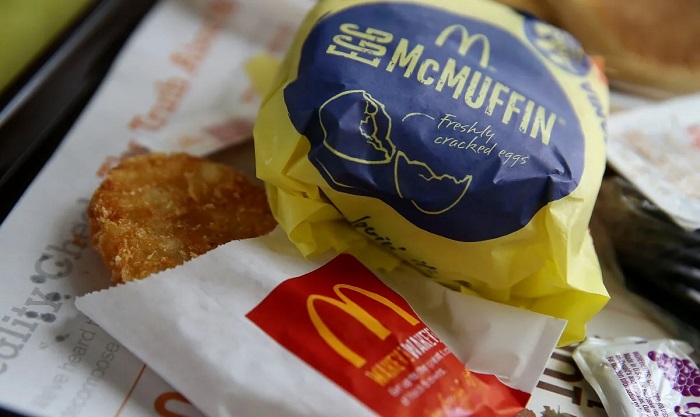Former McDonald's corporate chef Mike Haracz sheds light on the intricacies behind McDonald's decision to discontinue its all-day breakfast service. In a thought-provoking video on TikTok, Haracz reveals operational challenges related to fryer capacity and kitchen efficiency that contributed to the removal of the popular all-day breakfast menu.
Insight into McDonald's All-Day Breakfast Conundrum: Fryer Capacity and Operational Efficiency Disclosed


Insight into McDonald's All-Day Breakfast Conundrum: Fryer Capacity and Operational Efficiency Disclosed
In a culinary saga that captivated fast-food enthusiasts worldwide, McDonald's embarked on a groundbreaking venture with its introduction of all-day breakfast back in 2016, a move that thrilled patrons yearning for an Egg McMuffin well past the traditional breakfast hour cutoff. Alas, the saga was short-lived, as the initiative was temporarily halted in March 2020 amidst the turbulent backdrop of the Covid-19 pandemic. Subsequently, franchisees decisively opted to permanently remove all-day breakfast later in the same year, citing the dual objectives of enhancing speed of service and bolstering order accuracy.
However, lurking beneath the surface of this strategic shift lies a deeper, lesser-known reason elucidated by former McDonald's corporate chef Mike Haracz in his recent thought-provoking video on the popular social media platform TikTok.
Responding to an inquisitive commenter's query regarding the synchronization of French fry and hash brown preparation processes, Haracz delves into the multifaceted operational intricacies that govern McDonald's culinary operations. Shedding light on the overarching framework, he reveals a pivotal revelation, "Well, they tried all-day breakfast, but then they realized that the training, the amount of crew that they would have needed in the restaurant to successfully do that—it was way too difficult—you needed too many people," highlighting the logistical challenges that impeded the sustained implementation of all-day breakfast.
Delving deeper into the culinary labyrinth, Haracz illuminates the central issue surrounding the concurrent preparation of fries and hash browns – a subtle yet critical detail that underscores the operational constraints within McDonald's kitchens. Both fries and hash browns are subjected to the frying process within the same fryer, necessitating distinct temperature settings tailored to each item's unique culinary requirements.
Emphasizing the nuance of this culinary dilemma, Haracz elaborates, "It's not drastic, you could do one or the other, but they would not be McDonald's gold standard," underscoring the fastidious adherence to McDonald's culinary benchmarks and the requisite operational precision needed to meet those standards. Furthermore, he elucidates the spatial constraints posed by the shared deployment of heat lamps, where the co-existence of fries and hash browns within this limited culinary arena diminishes the expanse available for optimal food production.
Moreover, Haracz underscores the divergent intricacies associated with the preparation of fries and hash browns, delineating the contrasting techniques employed for each delicacy. While fries are conveniently ensconced in a sizable basket and plunged into the fryer en masse, hash browns demand individualized attention and care during the cooking process, adding an additional layer of complexity to the culinary workflow.
In a candid assessment of McDonald's operational ethos, Haracz unveils a revelatory perspective, suggesting that McDonald's prioritizes operational efficiency over consumer demands, epitomizing the brand's strategic philosophy. Cognizant of consumer loyalty and the overwhelming allure of the golden arches, McDonald's strategically navigates culinary challenges to streamline operations and uphold a semblance of consistency across its global network.
Concluding his insightful discourse, Haracz encapsulates the formidable conundrum faced by McDonald's with poignant clarity, "So that's why, it's just too difficult for them to figure out," encapsulating the intricate web of culinary intricacies, operational efficiencies, and consumer dynamics that collectively shape McDonald's strategic decisions and operational paradigms.
In unraveling the enigmatic veil shrouding McDonald's all-day breakfast discontinuation, Mike Haracz provides a compelling glimpse into the labyrinthine world of fast-food culinary operations, where logistical challenges, culinary nuances, and consumer dynamics converge to mold the culinary landscape of one of the world's most iconic brands.
-

 বাংলা
বাংলা  Spanish
Spanish  Arabic
Arabic  French
French  Chinese
Chinese 